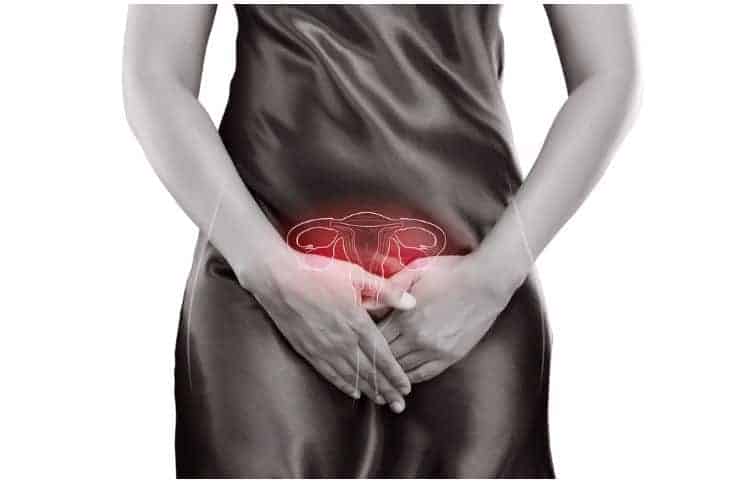Kyleena
It is a flexible T-shaped device that rests inside the uterus after being placed by a healthcare professional.
IUDs are becoming more popular than ever with more than 4.4 million women had an intrauterine device in 2015.
This IUD contains 19.5 mg of levonorgestrel (a hormone produced by the ovaries) that is released at a rate of approximately 17.5 mcg per day after 24 days to prevent pregnancy. After one year, it releases nearly 9.8 mcg per day.
At 1.18 inches, this intrauterine device is the smallest on the market and it is over 99 percent effective. Because of its small size, it can be used even if you didn’t give birth to a child.
Getting this intrauterine device does not require surgery and is done by your doctor during a routine in-office visit within a week after the start of your period.
After insertion, approximately one month later, you must return to the healthcare professional’s office to make sure that it is still in the correct position.
Your doctor can remove it at any time. Also, it is advised that postpartum insertions should be postponed until the uterus is fully involuted and not earlier than one month and a half after delivery.
This IUD starts to work as soon as it is inserted. Nevertheless, it is recommended to wait 48 hours before having sexual intercourse.
Side Effects And Precautions
Common side effects may include:
- tender or sore breasts;
- painful periods;
- acne;
- migraines or headaches;
- pain in the abdomen or pelvis;
- infection or inflammation around the outer part of the vagina;
- expulsion – IUDs have an expulsion rate between 3 and 5%, according to the American College of Obstetricians and Gynecologists;
- cysts in the ovaries;
- lighter and irregular periods for 3 to 6 months after insertion of the IUD. Some studies report up to a 95 percent reduction in blood loss;
- heavier bleeding during the first weeks;
- bleeding and spotting between periods, usually during the first 180 days of use;
- missed periods (around 12 percent of women stop menstruating after 1 year of using this IUD).
After the insertion of this IUD, a severe infection with symptoms, like – fever or severe pain, may occur. Also, it should be removed if pregnancy occurs with this intrauterine device in place.
Because this IUD isn’t a barrier method of birth control, you will still need to use a female or regular condom to protect yourself from sexually transmitted infections.
Note – the IUD should be used with caution in women with valvular heart disease who are at risk of an infection of the endocardium.
Drug Interactions
It may interact with:
- sugammadex (a unique neuromuscular reversal drug);
- mifepristone;
- sarilumab;
- dabrafenib.
Skyla
This intrauterine device is a small generally T-shaped device that is inserted by a healthcare provider into the uterus to prevent pregnancy.
It contains levonorgestrel, a form of progesterone, a female hormone that interrupts sperm movement and thickens the cervical mucus.
This device is made by the same company which produces the Mirena IUD – Bayer AG, a German pharmaceutical company.
It contains about 13.5 mg of levonorgestrel which is released in vivo (in the living body) at a rate of 14 mcg per day after 24 days. However, this rate decreases progressively to approximately 5 mcg per day.
This intrauterine device can remain in the uterus for a maximum of 3 years. At the end of this period, it is removed. Also, if you wish to continue using this type of birth control method, a new IUD is inserted.
Side Effects And Precautions
Common side effects may include the following:
- increased menstrual bleeding;
- painful menstrual periods;
- headaches or migraines;
- low mood;
- abdominal pain;
- ovarian cysts;
- acne;
- fatigue, because of an increase in progesterone;
- vaginal irritation;
- vaginal pain.
Serious side effects (very rare) may include:
- a missed menstrual period;
- depression;
- whites of the eye;
- yellowing of the skin;
- migraine headaches;
- bleeding that lasts for longer than half an hour after this intrauterine device is inserted
- fever;
- chills;
- pain during sexual intercourse;
- pelvic pain;
- unusual vaginal discharge;
- abnormal vaginal bleeding, particularly during the first months after this IUD is inserted. However, the number of bleeding days typically decreases with use.
Alcohol
There are no known interactions between alcohol and this intrauterine device.
Kyleena vs Skyla – Which IUD Is Better?
Both these “T-shaped” intrauterine devices are highly effective birth control methods, over 99 percent. This actually means that if 100 women use an intrauterine device, less than 1 woman will become pregnant during a 12 months period.
Also, unlike oral contraceptives, these devices don’t require women to take a daily pill since they work by releasing the hormone levonorgestrel, a form of progesterone – sex hormone involved in pregnancy and the menstrual cycle.
But, both must be inserted into your uterus by a qualified healthcare provider, plus, both may be removed anytime you want.
In addition, both are approved for use in women regardless of whether they have had a child or not. After insertion, Kyleena lasts up to 5 years, while Skyla lasts only 3 years. More importantly, Skyla releases a lower daily dose of levonorgestrel, which makes it, in our opinion, the better device.
Images credit – Shutterstock & Getty Images
READ THIS NEXT: Bacitracin vs Neosporin
References http://dtb.bmj.com/content/56/2/18 https://www.accessdata.fda.gov/drugsatfda_docs/label/2016/208224s000lbl.pdf
